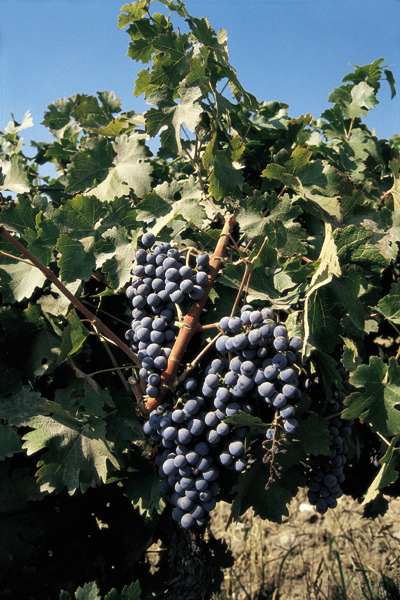
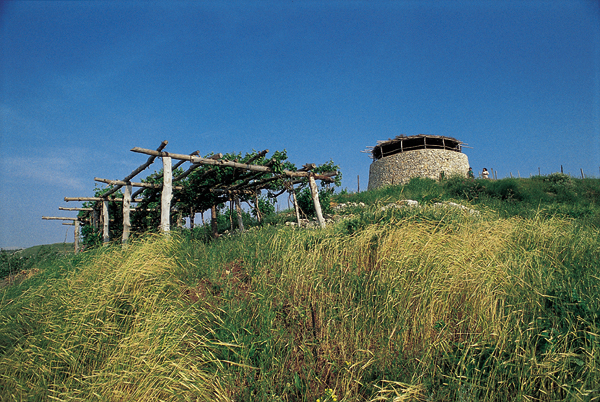
Isaiah’s Song of the Vineyard is one of the most vivid and precise poetic passages in the Bible. In seven verses (Isaiah 5:1–7; see the sidebar to this article), the prophet presents a sustained metaphor for God’s care for his people, by portraying the deity as a meticulous, attentive vintner and his people as disappointing, fetid fruit. The detailed imagery of Isaiah’s song both fuels the power of the prophecy and offers a historically reliable glimpse of a vital agricultural practice in eighth-century B.C.E. Jerusalem.
Isaiah’s song is also the most detailed description of vineyard maintenance in the Bible. We can test its accuracy by comparing it to the archaeological evidence. Whereas classical antiquity produced treatises on viticultural practice,1 no such works exist from ancient Israel during the Iron Age (1200–586 B.C.E.). Instead, we cull our knowledge of Israelite viticulture from biblical descriptions and archaeological remains. Understanding how the ancient Israelites provided for their needs allows us to appreciate the complexities of ancient life and gives us insights into the biblical text.
Isaiah’s song offers a glimpse into viticulture not only for the eighth century B.C.E., but for much of the Iron Age in Israel—and even before and after. In a traditional society such as ancient Israel’s, where customs, religion and agricultural wisdom were passed down from generation to generation, together with the land and the tools required to farm it, drastic innovations were rare. Basic vintner tasks—such as planting from shoots rather than seeds, pruning vines and treading grapes by foot—have persisted into the 20th century, so it is reasonable to assume that these practices extended throughout the Iron Age. And in a subsistence economy such as ancient Israel’s, the threat of crop failure would rule out much experimentation in the fields. Though an Israelite might have experimented with a jar of his wine by adding spices (Proverbs 9:5, 23:30; Matthew 15:23) or water (Isaiah 1:22), he was less apt to tamper with the grape harvest itself. What worked for his father and brought in the best harvest remained the practice for generations.
Vineyards were important to ancient Israel, both for economic reasons and for leisure. Vineyards provide the background for the stories of the drunkenness of Noah (Genesis 9:20–27), Samson’s escapades with his wife (Judges 14:5–15:8), Naboth’s vineyard (1 Kings 21:1–16, in which Jezebel arranges to have an innocent man killed so her husband, King Ahab, can seize his property) and the lovers in the Song of Songs (“Let us go out early to the vineyards and see whether the vines have budded, whether the grape blossoms have opened and the pomegranates are in bloom. There I will give you my love” [Song of Songs 7:12]). The Bible’s many references to vineyards should not be surprising given viticulture’s important role in ancient Israel’s threefold economy. Along with breeding stock and farming grain, growing vine and tree crops was part of a diversified economy that helped to ensure survival in the semi-arid hilly regions of ancient Israel. So when Isaiah recited an allegory in which the deity himself took up viticulture and got only ruined fruit for his trouble, his audience would easily have understood the theological barb. Adding to the passage’s power, the members of the agrarian-based community in Jerusalem would have empathized with Yahweh for his crop loss—before they learned in verse 7 that they were the fetid fruit, the targets of the song.
A verse-by-verse examination of Isaiah’s song teaches us much about how vineyards were cared for in Iron Age Israel and allows us to appreciate more fully the power of the prophet’s words.
My beloved had a vineyard on a valued hill…(verse 1)
The first detail to notice is the vineyard’s location—on a valued hill. Vineyards, in antiquity and today, thrive on hillsides. The Roman agronomist Cato (234–149 B.C.E.) advised that the ideal farm be located at the foot of a mountain so that the slopes could be used for vineyards. Grapes, olives and figs likely dominated the hillsides leading up to Israelite villages and towns, because they thrived from the drainage system created by the hill’s slant and rocky soils, and because they could easily be guarded from the hilltop. Fruit cultivation required an investment of years,2 and its yield was valuable as an exchange commodity.3 Slope cultivation enabled farmers to keep their investment close to their homes. This arrangement also reserved the valley beds, typically the more fertile soils, for grain.
Cultivation on hillsides required special techniques, however, to prevent soil erosion and water runoff. So the Israelites constructed tiers of flat earthen terraces on the slopes. Stone retaining walls supported the terraces, which transformed the hillsides into a series of flat, narrow planes suitable for farming.4 Agricultural terraces from the eighth to seventh centuries B.C.E. have been excavated 5 miles west of Jerusalem at Mevasseret Yerushalayim. Installations associated with olive oil and wine production, such as cisterns and basins, were found nearby.5 Terraces are also found in the north, around Shechem, sometimes with industrial installations.6 Today agricultural terraces cover more than 50 percent of the Judean hills around Jerusalem,7 and we can be sure that in antiquity they were even more important for exploiting the hilly central highlands.8
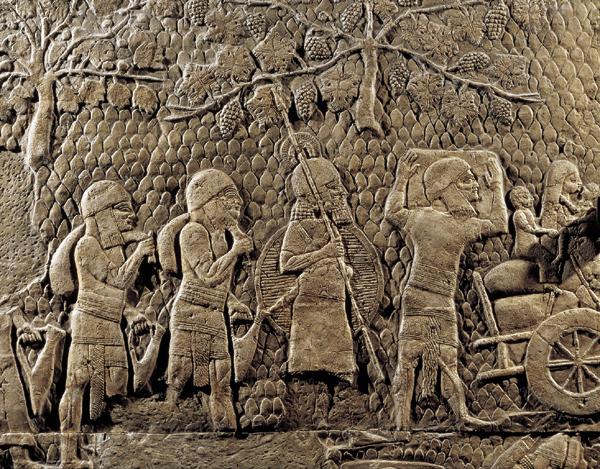
Dating terraces is difficult, however, because their installations and walls were built on bedrock and so leave no foundation evidence. To complicate matters, ceramic finds are not as common in fields as they are in buildings. Pottery sherds lodged within terrace walls are few, and they may date to another period, having washed down from above,9 or come from hilltop soil used for periodic refurbishing of the terraces.10 Nevertheless, since terraces are attested at the Iron Age I (1200–1000 B.C.E.) sites of Ai and Khirbet Raddana11 and at Mevasseret Yerushalayim in the Iron Age II period (1000–586 B.C.E.), and since they predominate today in the Judean highlands, we can safely assume that the Israelites practiced terrace agriculture in Isaiah’s time (eighth century B.C.E.). After all, they had the technology.
He worked the soil and cleared it of stones…(verse 2a)
Two procedures for soil preparation are reflected in this verse: loosening the soil and clearing it of stones.
Throughout the year, a hoe was used to loosen the dirt and rid it of weeds. The verb “to hoe,” ‘adar, appears in verse 6, which describes how Yahweh refuses to tend his vineyard, allowing it to become barren. This verb is used only here and in Isaiah 7:25, which also mentions hills that will no longer be hoed. The latter passage is part of a threatening prophecy: “Every place where there were a thousand vines will be overgrown with thorns and thistles…and all the hills that had been hoed with a hoe, you will not go there for fear of briers and thorns” (Isaiah 7:23–25). Using a hoe to dig up the hillside soil fends off the thorns and thistles.
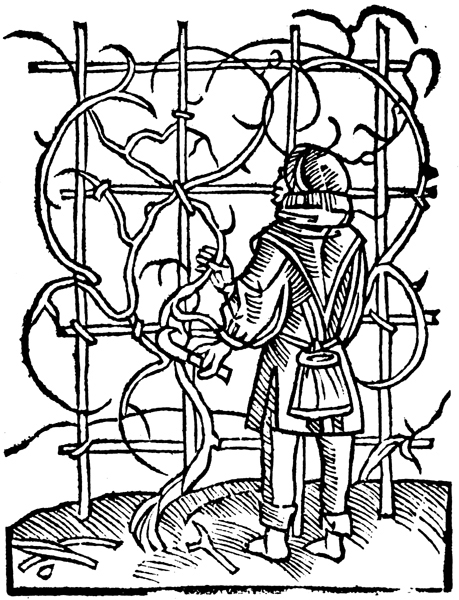
The hoe is a hand tool, unlike the plough, which is pulled by animals; soil work by hand is characteristic of vineyard cultivation. As the French historian Fernand Braudel noted, it was not until the second half of the 19th century that ploughs supplanted hoes in the vineyards of France. This was because French vineyards were terraced, and the limited space made hand cultivation easier.12 The same technology of building terraces and cultivating with hoes is evident in these two Isaiah passages.
Isaiah’s vintner would also have had to clear the soil of larger stones. Happily for the vintner, these stones could be used for terrace walls, which in turn helped prevent soil erosion and water run-off.13 Yahweh built such walls for his vineyard, but we know of them only because their destruction is described in verse 5: “I will breach its wall.”
To vintners, ridding the soil of stones is not nearly as arduous a chore as it is for farmers cultivating grains and legumes, since some rocks are needed to aerate the soil and strengthen vine roots. Gravelly soil also helps drain the land, a prime consideration for growing vines.14 The Roman poet Virgil even advised the planting of 30 stones into soil readied for vines.15
He planted rare vines…(verse 2b)
Isaiah’s vintner has planted vines, not seeds. Vine cultivation in antiquity, as today, was done by planting cuttings and shoots, not, as in grain farming, seeds. Greek and Roman agronomists understood that cultivating vines from seedlings resulted in poor fruit,16 so they advised planting vinestocks.17 Vines, today as in antiquity, are first grown in nursery beds so that the plants can develop strong root systems.18 Isaiah’s use of the verb nata’, “to plant,” with the direct object “vine” is an accurate detail used to distinguish this kind of planting from the sowing of seeds.19
An ancient depiction of the Israelite method of vine training has been preserved on Assyrian wall reliefs depicting the capture of Israelite Lachish in 701 B.C.E. (Now housed in the British Museum, the reliefs, from the royal palace in Nineveh, boast of the Assyrian king Sennacherib’s victories over Judah.) Vines and olive trees dot the background as the Israelite captives depart from Lachish. The vines are freestanding and low to the ground rather than propped on stakes or hung from trees or a pergola (a kind of trellis), as they often were in Greece and Rome several centuries later. The absence of any props for the vines in Isaiah’s song, along with the depictions of freestanding vines in the Lachish reliefs, suggests that Israelite vines grew naturally.
Growing vines on the ground has two benefits. First, the foliage shades the soil from the sun, thereby reducing moisture evaporation. Israel has little rainfall during the summer months, when berries are developing. Preserving any moisture in the soil at this time is vital. Second, freestanding vines allow the vintner to dispense with the additional labor and expensive timber necessary for trellising or staking each vine.20
Once the vines are planted, the farmer prunes the branches. Pruning is mentioned in verse 6 as a task the deity will discontinue because the crop is so bad. Clipping the wood and leaf growth in the first two years strengthens the trunk of the vine; later, cutting back the number of buds on a branch enhances the growth of fruit. Pruning concentrates growth into fewer buds, yet the resulting grape clusters contain more fruit.
Pruning requires some management decisions: If the vintner decides to produce an abundant crop one year, the following year his buds will be less fruitful.21 Overcultivation of vines, in other words, is paid for in the next harvest. Conservative pruning enhances stability in production from year to year. While a one-time big harvest might have delighted the first-time Israelite vintner, he probably pruned cautiously to ensure the reliability of a good crop each year.
The vine God plants is soreq, “rare vine.” The term is used only three times in the Bible, in contrast to gephen, “vine,” which appears 53 times. Twice it is God who plants the soreq vine (in Isaiah 5:2 and Jeremiah 2:21), and a third time it is one of the vines that favored Judah will enjoy (Genesis 49:11). This vine, soreq, may have its origins in the fertile Soreq Valley, west of Jerusalem. This valley offered sloping hills near occasional sources of water, making an excellent cultivation area for tree and vine crops. If the Soreq Valley was known for its fecundity, then soreq vines would have developed a reputation among the Judahites as “choice” (as it is often rendered in English) or “rare.” That these particular vines were valued for their bountiful yields is clear from the bitter disappointment of the divine vintner in Isaiah 5:2, 4 and Jeremiah 2:21, 22 and in Judah’s abundance of wine (Genesis 49:11).
He built a tower in its midst…(verse 2c)
Isaiah’s vintner constructs a tower and a wine press in his vineyard. There was no need to build these installations before planting; indeed, the vintner had up to four years to do so before his first harvest. The sequence of Isaiah’s tasks, then, continues to match viticultural practice.
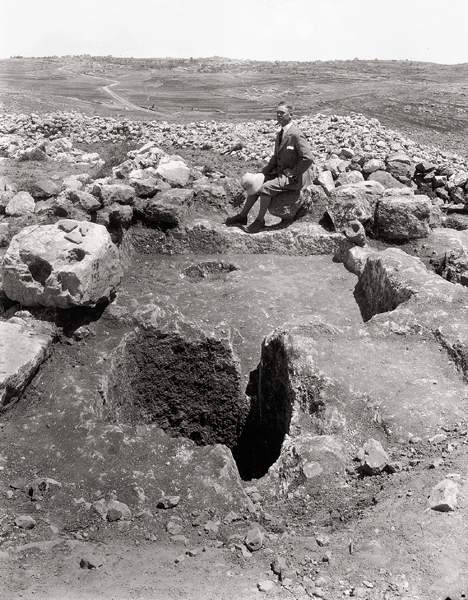
Towers and presses are built within the vineyard for efficiency and ease. A press was essential because most of the harvested grapes went toward wine production. Some, however, were saved to be eaten, either as is or as raisins, which were valued as energy sources.23 Raisins, which stored well,24 and raisin cakes are often listed as provisions for travel in biblical stories.
The use of towers in Iron Age Israel is less evident from the biblical and archaeological sources. In Hebrew, the term for tower is migdal, from the verb gdl, “to grow” or “be great.”25 Migdal, the word used by Isaiah, denotes a structure, then, of some height, literally, a grown or great thing, or one that protects a great thing, such as a city or a vineyard. The best-known migdal in the Bible is that of Babel in Genesis 11. Migdal usually signifies a defense structure for cities, such as a guardpost or battle station (Judges 8:9, 17, 9:51; 2 Kings 9:17, 17:9, 18:8; 2 Chronicles 14:7, 26:9, 32:5). Such defensive towers appear in the archaeological record for Iron Age cities.26 Agricultural towers, however, are far less evident. This Isaiah passage, in fact, is unique in the Hebrew Bible for its description of a tower within a vineyard. The New Testament twice mentions vineyard towers (Matthew 21:33; Mark 12:1), but these texts were written 800 years after Isaiah. The question, then, is whether towers were common or rare in Israelite viticulture in the Iron Age.
Only a few Iron Age field towers have been found in Israel.27 None has been discovered at Timnah, Ekron or Lachish, sites where horticultural activity was once prominent. Gibeon, just north of Jerusalem, has evidence of the largest wine production center in Iron Age Israel (late seventh century B.C.E.), yet there are no tower remains. Archaeological surveys have detected field towers—in abundance—in the north, but most are Hellenistic (332–37 B.C.E.) and Byzantine (324–638 C.E.). Still, these late towers are significant for our understanding of Israelite viticulture because they show that agricultural towers did exist in ancient Palestinian fields and vineyards. One such tower, at Bene Hassan, in Samaria, for example, has a wine press, threshing floor and oil presses nearby, suggesting that it had an agricultural function.28
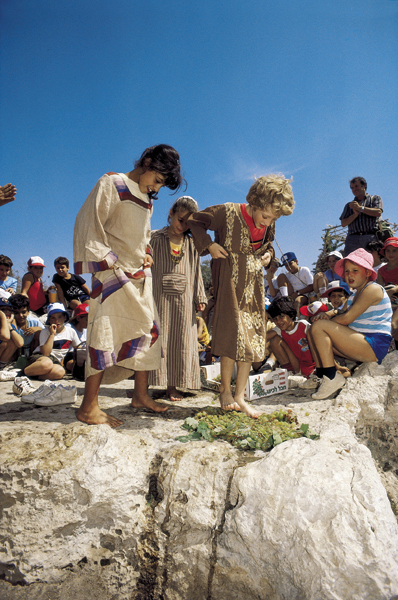
A tower in a vineyard provided security against intruders and pests, particularly during the grape harvest, and it offered a shady, cool place to rest, no doubt a needed relief for harvesters and grape treaders. It is possible, as suggested by archaeologist Shimon Dar, who has conducted surveys in Samaria, that towers were also used to temporarily store newly filled wine jars.
Both the archaeological remains and the biblical texts suggest that vineyard towers were uncommon in the Iron Age. If so, then the tower described in Isaiah is not an everyday feature of Israelite viticulture, but instead reflects the extraordinary measures Yahweh has undertaken to ensure a fruitful harvest. We saw above that he used soreq vines, otherwise rare in biblical depiction; here he constructs a similarly rare tower. Yahweh, it would seem, does all he can for his vineyard.
The biblical calendars referred to in Deuteronomy 16 and Leviticus 23 offer another possible explanation for the dearth of field towers in the Iron Age. Temporary huts called sukkoth (singular, sukkah), or “booths,” were made of branches or animal skins. These structures provided the name for the grape-harvest festival, Sukkoth. Since the huts were made of perishable materials, they are not found in the archaeological record. They were most likely seasonal structures, erected for the harvest and, in later times, replaced by stone towers.
In another passage, Isaiah, himself, employs the image of a sukkah in a vineyard: “And daughter Zion is left like a booth (sukkah) in a vineyard, like a shelter” (Isaiah 1:8). Isaiah thus draws on two traditions of vineyard structures. In Isaiah 1:8, it is the booth’s vulnerability that qualifies it for metaphorical use. Daughter Zion (Jerusalem) is as precarious as a vineyard sukkah; she is a besieged city whose fortifications will not hold. A stone migdal might be considered a better image for the city, yet Isaiah chooses the sukkah because it is vulnerable and can easily be crushed or blown away. He demonstrates at once his metaphoric dexterity and his viticultural knowledge. Obliquely, he also informs us of the limitations inherent in a vineyard sukkah and suggests the superiority of the tower, chosen by Yahweh in our passage (Isaiah 5:2). The stone tower is more permanent.
Stone towers may also have carried more prestige, demonstrating the vintner’s commitment to his crop. This distinction is indicated throughout these verses by Yahweh’s choice of migdal over sukkah, soreq vine over gephen, and hillside over flat lands. Isaiah’s divine vintner employs the very best of Israelite viticulture. The average Israelite vintner probably did not have all these options.
In 2 Chronicles 26:9–10, the Judahite King Uzziah builds two kinds of towers, one for the gates of Jerusalem and another for the wilderness. The context and location of the wilderness towers indicate an agricultural function: “He built towers in the wilderness and hewed out many cisterns, for he had large herds in the Shephelah and in the plain, farmers and vintners in the hills and in the fertile land, for he loved the soil” (2 Chronicles 26:10).
Uzziah and the vintner in Isaiah 5 have much in common: They both build agricultural towers; the Hebrew verbs bnh (built) and hzb (hewn) are used to describe their construction work; and they are motivated by love. Uzziah’s work is born of his love for the soil. Isaiah’s divine vintner is twice referred to by Isaiah as “my beloved” (dodi) in Isaiah 5:1, and his disappointment in the resulting crop approaches personal betrayal (Isaiah 5:4). For Yahweh does not take the ruined harvest in stride, remaining hopeful that the next year’s crop will fare better. Rather, he destroys the vineyard with the costly rashness of a spurned lover.
The attention given to the cultivation of a vineyard in antiquity probably did verge on loving devotion, as it still does. Grapes are not a crop that can be planted and left; they demand continual attention and commitment.
…And [He] hewed a wine press in it…(verse 2c)
Locating the press within the vineyard as Isaiah’s vintner has done (“in its midst,” Isaiah 5:2) meant that the harvest and wine production could occur at the same time, thereby making maximum use of agricultural laborers and keeping grape transport to a minimum. Grape skins are delicate when ripe, so placing the press near the grapes also helped prevent damage to the fruit.
Today the bladder press is used extensively for pressing grapes into wine. The press has a stainless steel drum with a long rubber bag inside; when blown up, the bag presses the grape mash against the metal walls. Juice is extracted without breaking the grape pips, the inner part of the fruit that consists of oils, seeds and tannins.29 Breaking the pips is avoided because their contents give a bitterness to the juice.
Before modern mechanization, grape pressing was accomplished by foot, an effective method because it was gentle on the pips. Human feet and their tendency to slip allowed the pips to stay intact. The process of pressing grapes by foot did not require much improvement, save in hygiene, and so continued from the Early Bronze Age to our own century (this was done not only in the Near East but also in Egypt and Greece). It continues today in rural or small domestic wineries in the Mediterranean (and elsewhere), though this may serve the tourism industry as much as it does viticulture.
The ancient Israelite wine press was a simple, fairly flat surface; the larger ones accommodated up to a dozen or more pairs of feet. If there were bag presses or wooden presses, they have not survived in the archaeology or the literature. The Byzantine period saw the development of the screw-weight press, in which wooden or stone weights were screwed down onto a cylinder containing grapes. Byzantine period screw presses have been unearthed in Israel. However, even these examples may only have supplemented foot treading, as they were found in the middle of large treading floors.30
Archaeology has uncovered ancient wine presses throughout Israel. Though they vary in design, basic features cohere with Isaiah’s all-too-brief description. The detail Isaiah gives is significant: While the tower is “built” (bnh) from stone, the wine press is “hewn” (hzb) from the bedrock. Archaeology bears out Isaiah’s detail. The discovered presses are flat hewn surfaces of bedrock—specifically, of central highland Cenomanian limestone. Happily, the stone is both malleable and impermeable.31
Though simple, the design of these presses varies somewhat. The basin can be oval or rectangular, with or without small depressions for the juice to flow into before being put into jars. Two wine presses, both from the Iron Age, were found at Tell en-Nasbeh, just north of Jerusalem. One has a square treading floor, measuring about 9 feet across, and a vat, 3 feet square and 2 feet deep. The second measures 6.5 feet by 8 feet. Grapes were trod on the treading floor, and the juice drained into the vat to ferment. Not all presses had an accompanying vat, however. In some the juice would simply remain on the treading floor to ferment. It was better to let the juice ferment on the treading floors rather than in jars since accumulated pressure from the gases produced during fermentation could break the jars. Later, any debris could be sifted out and the finished wine stored in jars.
Tell Michal, on the Mediterranean coast, has four Iron Age presses. They are easy to date because the area around the presses was used in just one period. The excavator, Ze’ev Herzog, notes that “although very few pottery sherds were found in and around the wine presses, all are from the Iron Age.”32 He adds that this find is all the more significant since “the dominant pottery collected from the surface on all other parts of the hill dates from the Persian, Hellenistic and Roman periods.” All this varied and later material is absent from the presses, indicating that the presses were, by these periods, covered up and in disuse.
Carved from the bedrock, the treading floors of the presses at Tell Michal average about 6 feet in width and length and are rectangular in shape. Each treading floor has two circular vats attached to it by channels also carved from the bedrock. In each treading floor, one vat is larger and one smaller. Each vat contains a small hollow in the bottom for collecting the last drops of wine.33 The four wine presses share two rectangular basins (above-ground stone structures) between them. Herzog suggests that the rectangular basins acted as bins to store grapes brought in from the harvest before treading. The construction of these four Iron Age wine presses suggests that they were designed to allow several small farmers to tread and ferment their grapes at once. One farmer could tread his grapes and as the juice fermented in one of the vats, another farmer could tread his. By stopping off the first vat, the juice for the second farmer would go into the second vat. Eight farmers could be served by these two complexes without any waiting. With this system, farmers could help guard each other’s property and enjoy the social interaction.
Isaiah’s vintner worked alone, but these Tell Michal presses may have been shared by several village vintners. On the slopes outside of Jerusalem, where multiple vintners cultivated their vineyards, the use of co-op wine presses would have allowed more of the hills to be devoted to vines.
The details of Isaiah’s Song of the Vineyard tell us that Yahweh performed all the tasks required to prepare for a grape harvest. It is a specific and deft appropriation of a common feature of eighth-century B.C.E. daily life.
While this song in Isaiah 5 highlights the vintner’s diligent efforts and his disappointment when his crop—the people—is ruined, it leaves unsaid what Isaiah later makes explicit: that Yahweh now has a wine press for treading what he has cultivated: “I have trod the wine press by myself, and from the peoples no one was with me; I trod them with my anger and trampled them in my fury” (Isaiah 63:3). So whether the people of Judah are fetid fruit or ripe grapes, their fate lies unmistakably in the vintner’s hands.
MLA Citation
Endnotes
Theophrastus (370–285 B.C.E.), Enquiry into Plants; Marcus Cato (234–149 B.C.E.), de Agricultura; Marcus Terentius Varro (116–27 B.C.E.), Res Rusticae; Virgil Publius Vergilius Maro (70–19 B.C.E.), Georgics; Lucius Junus Moderatus Columella (mid-first century C.E.), de Re Rustica.
Vines take three years of care before they bear fruit, whereas olive trees take five to six years, and fig trees three to four years (Daniel Zohary and Maria Hopf, Domestication of Plants in the Old World: The Origin and Spread of Cultivated Plants in West Asia, Europe, and the Nile Valley [Oxford: Clarendon, 1988], pp. 143, 137, 150, respectively).
See Amos 9:5, where the hills drip sweet wine, and Jeremiah 31:5, where vineyards will again dot the hills of Samaria. Such hills enabled economic prosperity.
C.H.J. de Geus, “The Importance of Archaeological Research into the Palestinian Agricultural Terraces with an Excursus on the Hebrew Word gbi,” Palestine Exploration Quarterly (PEQ) 107 (1975), p. 67.
Gershon Edelstein and Mordecai Kislev, “Mevasseret Yerushalayim: The Ancient Settlement and Its Agricultural Terraces,” Biblical Archaeologist 44 (1981)
Edward Campbell, “The Shechem Area Survey,” Bulletin of the American Schools of Oriental Research (BASOR) 190 (1968), pp. 19–41.
Zvi Ron, “Agricultural Terraces in the Judean Mountains,” in Israel Exploration Journal 16 (1966), pp. 33–49, 111–122.
de Geus, “Archaeological Research,” p. 67. Lawrence Stager has discussed the significance of this technology for Iron I settlements. Terracing the hills made them agriculturally useful and helped open up the highland frontier of Canaan. See Lawrence Stager, “The Archaeology of the East Slope of Jerusalem and the Terraces of the Kidron,” Journal of Near Eastern Studies 41 (1982), pp. 111–121; and “The Archaeology of the Family in Ancient Israel,” BASOR 260 (1985), pp. 1–35.
John Bradford, “Fieldwork on Aerial Discoveries in Attica and Rhodes,” Antiquaries Journal 36 (1956), pp. 172–80.
Tony Wilkinson, “The Structure and Dynamics of Dry-Farming States in Upper Mesopotamia,” Current Anthropology 35 (1994), pp. 483–520.
Stager, “Archaeology of the Family”; Joseph Callaway, “The 1966 ‘Ai (et-Tell) Excavations,” BASOR 196 (1969), p. 16.
Terrace building illustrates both tasks mentioned in Ecclesiastes 3:5: “a time to gather and to throw away stones.”
Timber was largely imported from Syria and Phoenicia; by Iron II the forests were denuded. Unnecessary in Israel’s dry, hot summers, this cost was likely avoided by the farmer.
Jeremiah’s divine vintner draws a contrast by way of disappointing results. While he planted soreq from “true seed,” he got “strange” or “foreign” gephen (Jeremiah 2:21). The people, as cultivated soreq, are lamented or admonished for “turning into foreign vine.”
Large quantities of charred grape seeds were found in Stratum XIV (10th century B.C.E.) at Tell Michal. See Shmuel Moshkovitz, “Iron Age Stratigraphy and Architecture (Strata XIV-XII),” in Excavations at Tel Michal, Israel, ed. Ze’ev Herzog, George Rapp, Jr., and Ora Negbi (Minneapolis: Univ. of Minnesota, 1989), p. 64.
Francis Brown, Samuel Driver and Charles Briggs, A Hebrew and English Lexicon (Oxford: Clarendon, 1957), p. 153.
One field tower, dating to the eighth century B.C.E., stands atop a mound at Tell Beit Mirsim (William F. Albright, The Excavation of Tell Beit Mirsim III, Annual of the American Schools of Oriental Research 21–22 [1943], p. 41).
Shimon Dar, Landscape and Pattern: An Archaeological Survey of Samaria, 800 B.C.E.–636 B.C.E, British Archaeology Reports, International Series 308 (1986).
Rafael Frankel, “Screw Weights from Israel,” in Oil and Wine Production in the Mediterranean Area, ed. Marie-Claire Amouretti and Jean-Pierre Brun, Bulletin du correspondance hellénique; Supplement 26 (1993), pp. 106–118. Also, see two good examples of these from ‘Azzun, in Israel Roll and Etan Ayalon, “Two Large Wine Presses in the Red Soil Regions of Israel,” PEQ 113 (1981), pp. 111–125.
Ze’ev Herzog, “A Complex of Iron Age Wine Presses (Strata XIV-XIII),” in Herzog, Rapp and Negbi, Excavations at Tel Michal, Israel, p. 74.

